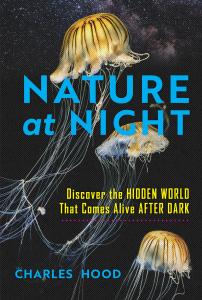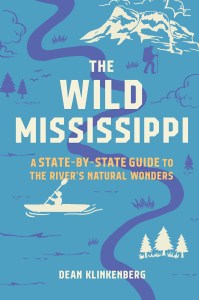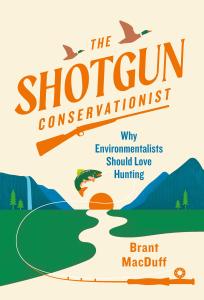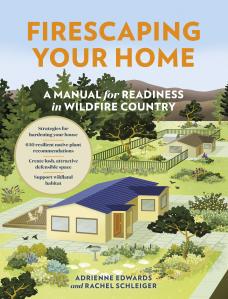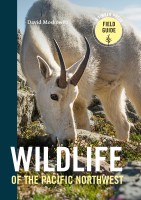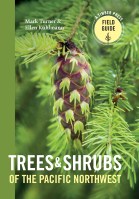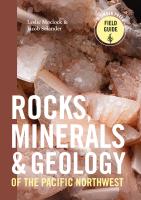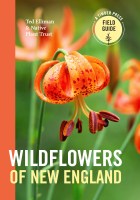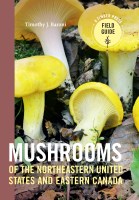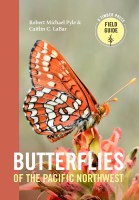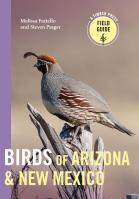Father’s Day Books

Celebrate the dad in your life with these books for Father’s Day!
While old tales warn us that danger lies waiting in the dark, there is actually an abundance of thriving, colorful life. Solar winds brighten the sky with Northern and Southern Lights. In the desert, elegant datura blooms at night, enticing moths to help with pollination, while in the Rockies grizzly bears make a meal of the insects to sustain them during hibernation. In the ocean, night-feeding dolphins chase nocturnal squid which have made a vertical migration to the surface. In the jungles, jaguars hunt by moonlight while night monkeys swing safely through the trees.
Experienced naturalist and photographer Charles Hood captures it all, sharing his nocturnal adventures all over the world, with insight, wit, and over 240 stunning photographs. Open your senses to this darkened world, which is strange yet familiar—and more beautiful than you ever imagined.
These woefully misunderstood creatures dwell in darkness, inspire fear, and threaten danger. They’ve been viewed as the pawns of evil deities and taken the undeserved blame for the spread of deadly viruses. The Weird and Wonderful World of Bats provides a fresh introduction to these curious flying mammals, explaining how they experience the world through unique senses, where and how they fly, the origins of their complex relationships with humans, and how we can learn from them—not only to coexist, but potentially grow healthier and wiser together.
Over 180 personality-filled photographs showcase the rich diversity of bats from all over the world.
Across 193 million acres of forests, mountains, deserts, watersheds, and grasslands, national forests provide a multitude of uses as diverse as America itself. They welcome 170 million visitors each year to hike, bike, paddle, ski, fish, and hunt. But “the people’s lands” offer more than just recreation. Lost habitats are recovered, timber is harvested, and endangered wildlife is protected as part of the Forest Service’s enduring mission.
In Our National Forests, Greg Peters gives an inside look at America’s most important public lands and the people committed to protecting them and ensuring access for all. From the Forest Service growing millions of seedlings in the West each year, to their efforts to save the hellbender salamander in Appalachia, the story spans the breadth of the country and its diverse ecology. And people are at the center, whether the dedicated Forest Service members or the everyday citizens who support and tend to the protected lands near their homes.
This complete look at America’s national forests—their triumphs, challenges, controversies, and vital programs—is a must-read for everyone interested in the history of America’s most important public lands.
Uncover Darwin’s most important writings about plants with this important collection featuring expert interpretations and rare illustrations.
Charles Darwin is best known for his work on the evolution of animals, but in fact a large part of his contribution to the natural sciences is focused on plants. His observations are crucial to our modern understanding of everything from the amazing pollination process of orchids to the way that vines climb. Darwin and the Art of Botany collects writings from six often overlooked texts devoted entirely to plants, and pairs each excerpt with beautiful botanical art from the library at the Oak Spring Garden Foundation, creating a gorgeously illustrated volume that never existed in Darwin’s own lifetime, and hasn’t since. Evolutionary botanist and science historian James Costa brings his expertise to each entry, situating Darwin’s words in the context of the knowledge and research of the time. The result is a new way of visualizing Darwin’s work, and a greater understanding of the ways he’s shaped our world.Drawing from original interviews with the author, Holler is an illustrated look at six inspiring changemakers. Denali Nalamalapu, a climate organizer in their own right, introduces readers to the ordinary people who became resisters of the Mountain Valley Pipeline, a project that spans approximately 300 miles from northwestern West Virginia to southern Virginia—a teacher, a single mother, a nurse, an organizer, a photographer, and a seed keeper.
In West Virginia, Becky Crabtree, grandmother of five, chains herself to her 1970s Ford Pinto to stop construction from destroying her farm. Farther south, in Virginia, young organizer Michael James-Deramo organizes mutual aid to support community members showing up to protest the pipeline expansion. These (and more) are the stories of everyday resistance that show what difference we can make when we stand up for what we love, and stand together in community. When the world tells these resisters to sit down and back off, they refuse to give up.
More than anything, Holler is an invitation to readers everywhere searching for their own path to activism: sending the message that no matter how small your action is, it’s impactful. The story of the Mountain Valley Pipeline is one we can all relate to, as each and every one of our communities faces the increasing threats of the climate crisis, and the corporations that benefit from the destruction of our natural resources. Holler is a moving and deeply accessible—and beautifully visual—story about change, hope, and humanity.
Did you know that one-quarter of all North American fish species are native to the Mississippi? Or that it shelters 300 species of birds during seasonal migrations? The Mississippi River runs through the heart of the nation, shaping its history and identity. But few of us understand its essences. It’s a life-giving force that sustains thriving ecosystems across wetlands, prairies, and bluffs.
In The Wild Mississippi, Dean Klinkenberg not only shares the wonders of the river, but he also shows you where to experience them firsthand. Pick up this must-read guide and get ready to experience the river wild!
You’ll discover:
- Hiking, biking, and paddling spots
- More than 160 parks, forests, and wildlife refuges
- Natural history museums and aquariums
- Excursions from Minneapolis, St. Louis, Memphis, New Orleans, and more
From a New York Times bestselling author, a wildlife ecology expert and environmental advocate provides readers with the next step in their ecological journey.
In How Can I Help?, Tallamy tackles the questions commonly asked at his popular lectures and shares compelling and actionable answers that will help gardeners and homeowners take the next step in their ecological journey. Topics range from ecology, evolution, biodiversity and conservation to restoration, native plants, invasive species, pest control, and supporting wildlife at home. Tallamy keenly understands that most people want to take part in conservation efforts but often feel powerless to do so as individuals. But one person can make a difference, and How Can I Help? details how.
Whether by reducing your lawn, planting a handful of native species, or allowing leaves to sit untouched, you will be inspired and empowered to join millions of other like-minded people to become the future of backyard conservation.
An inspiring memoir that explores nature’s crucial role in our emotional and mental health, and a “poignant meditation on surviving the darkest recesses of human nature” (The Marginalian).
Bats can hear shapes, plants can eat light, and bees can dance maps. When his life took him to a painfully dark place, the poet behind The CryptoNaturalist, Jarod K. Anderson, found comfort and redemption in these facts and the shift in perspective that comes from paying a new kind of attention to nature.
Something in the Woods Loves You tells the story of the darkest stretch of a young person’s life, and how deliberate and meditative encounters with plants and animals helped him see the light at every turn. Ranging from optimistic contemplations of mortality to appreciations of a single mushroom, Anderson has written a lyrical love letter to the natural world and given us the tools to see it all anew.
An “instant classic”, this genre-bending blend of naturalism, memoir, and social manifesto is a fascinating study for rewilding the city, the self, and society (Jeff VanderMeer, New York Times bestselling author).
During the real estate crash of the late 2000s, Christopher Brown purchased an empty lot in an industrial section of Austin, Texas. The property—abandoned and full of litter and debris—was an unlikely site for a home. Brown had become fascinated with these empty lots around Austin, so-called “ruined” spaces once used for agriculture and industry awaiting their redevelopment. He discovered them to be teeming with natural activity, and embarked on a twenty-year project to live in and document such spaces. There, in our most damaged landscapes, he witnessed the remarkable resilience of wild nature, and how we can heal ourselves by healing the Earth. Beautifully written and philosophically hard-hitting, A Natural History of Empty Lots offers a new lens on human disruption and nature, offering a sense of hope among the edgelands.
“Brown lives far from any conventional battlefield, but he is surrounded by the wreckage of a different war, and he, too, finds hope in cultivating the ruins of nature…A Natural History of Empty Lots is less a departure from the nature writing tradition than a welcome addition to its edgelands.” —New York Review of Books
“The nature writing we need now.” —Michelle Nijhuis, author of Beloved Beasts
“Incredible” —Kelly Link, Pulitzer Prize finalist
The Shotgun Conservationist doesn’t teach us how to hunt, it explores why we should hunt. As public lands remain imperiled, factory farms pollute the earth and subject animals to inhumane conditions, and global uncertainty presses us all to be more self-sufficient, there has never been a better time to take up hunting. Writer, natural historian, and public speaker Brant MacDuff has done just that. An avid animal lover and raised as a non-hunter, MacDuff started his journey intending to investigate the claim that “hunting is conservation.” So convinced, he now holds a hunting license in four states and gives lectures on the positive impact it has on conservation efforts nationwide.
Armed with years of experience in the field and a deep love for the natural world, MacDuff tells the provocative, humorous, and insightful story of how he became a hunter. Along the way, readers meet a cast of colorful characters and learn the firsthand research that helped change Brant’s mind. You may not book a hunting trip after reading The Shotgun Conservationist, but you’ll have a new perspective on and appreciation for those that do.
New technologies have the potential to improve our health, feed billions of people, supercharge our economies, store essential information for millions of years, and save our planet. But if we're not careful, they can also do immeasurable harm. Luckily, in Jamie Metzl, we have a leading expert who integrates science, technology, history, politics, and international affairs to envision a future that most specialists, almost by definition, cannot see.
In this bold and inspiring exploration of transformative human knowledge, Metzl gives us the definitive account of the technological precipice on which we stand and the map to where we go from here.
The gray wolf has made an astonishing comeback in Washington. Nearly eradicated by the 1990s, conservationists and environmentalists have cheered its robust return to the state over the last two decades. But Washington ranchers are not so joyous. When wolves prey on livestock, ranchers view their livelihood as under attack.
In The Return of Wolves, journalist Eli Francovich investigates how we might mend this divide while keeping wolf populations thriving. He finds an answer in the time-honored tradition of range riding and one passionate range rider, Daniel Curry, who has jumped directly into the fray by patrolling the rural Washington landscape on horseback. Curry engages directly with farmers, seeking to protect livestock from wolves while also protecting and proliferating wolf populations. In The Return of Wolves, we meet an eclectic cast of players—local ranchers, politicians, environmentalists, and everyday folks caught in the middle—and find hope for the future of wolves, and perhaps for our divided nation.
Spot an owl that’s long been watching your every move and darker aspects of its reputation may spring to mind: harbinger of doom, guides through the spirit world, merciless bird of prey. Mythology and superstitions have projected our fear of the unknown onto these mostly night-dwelling creatures. But these wondrous birds are so much more than shadows or silent glides through the night. In The Owl Handbook, lifelong birding enthusiast John Shewey leads us through an exploration of owls’ cultural impact as seen in folklore and mythology, provides in-depth investigations of 19 owls of North America and a survey of 200 owls across the globe, and gives advice on how to respectfully observe and protect these enigmatic birds, brought to life by hundreds of full-color photographs.
This hardworking, actionable guide is a must-have for homeowners looking to fight the risks of wildfire spreading to their homes and property.
Wildfires are burning over longer seasons and more intensely than ever before, and everyone living in a wildland-urban interface or wildland-adjacent area should take precautionary steps to mitigate the risk of property damage. In Firescaping Your Home, Adrienne Edwards and Rachel Schleiger provide expert guidance and specific recommendations on how to harden your home against fire and create defensible space that is lush and attractive. They also provide in-depth native plant lists of hundreds of species that have evolved to coexist with fire in the West, and show how and why including these on your property sustains wildlife and can actually be your most powerful defense.
From the towering cliffs of Zion to the ancient dwellings of Mesa Verde; from the bighorn sheep of Arches National Park to the Martian-looking landscapes of the Petrified Forest—each trail featured in Southwest Canyon Country’s Best Nature Walks beckons with the promise of adventure and discovery.
But these are not the epic treks of seasoned adventurers or the grueling expeditions of intrepid explorers. Instead, these are brief excursions—often chosen for being less crowded and for their proximity to the road—that can be enjoyed by families, solo travelers, and nature enthusiasts of all ages and abilities. Whether you’re seeking a peaceful retreat into the wilderness or simply craving a breath of fresh air, this book has something for everyone.
Newsletter Signup
By clicking ‘Sign Up,’ I acknowledge that I have read and agree to Hachette Book Group’s Privacy Policy and Terms of Use

